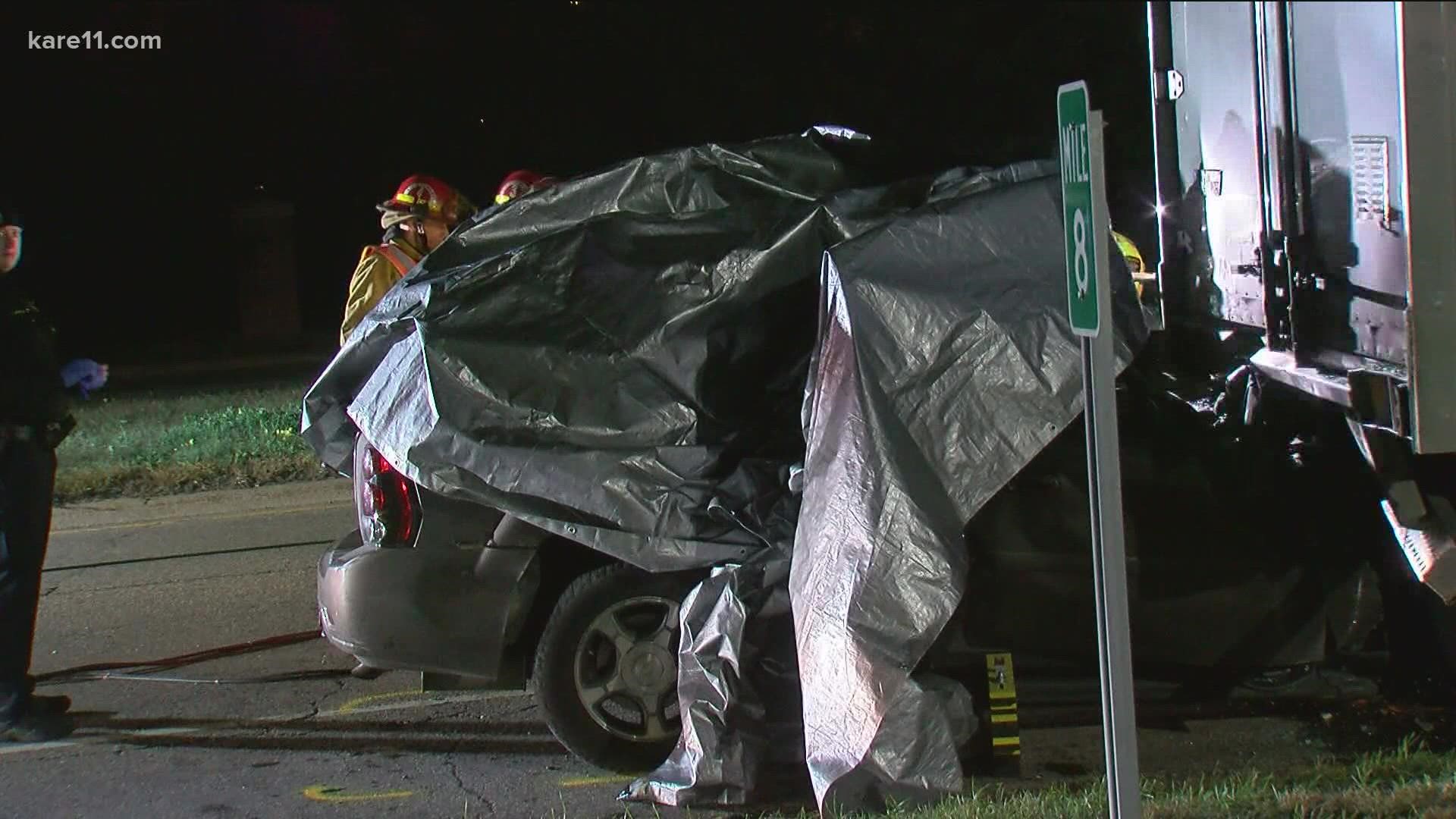ST PAUL, Minn. — So far this year, 392 people have died on Minnesota roads, according to the Minnesota Department of Public Safety.
Traffic officials say it’s a 23% increase compared to 2020, and the numbers last year were already higher than normal.
"This is horrible, and this is unacceptable,” Traffic Safety Director Mike Hanson says.
This concerning trend started when the pandemic first hit in 2019.
Originally, traffic officials thought we would see fewer traffic deaths during the pandemic, because fewer people were driving, they were wrong.
"What we actually saw was with reduced vehicle miles traveled was dramatically increased speeds and risk taking behavior,” State Patrol Colonel Matt Langer says.
Traffic officials say 2021 is shaping up to be the deadliest year on Minnesota roads since 2007.
"You can take the number of deaths on our roads in any given year and multiply them by about a hundred to get how many injuries there are on the roads. So, we're approaching 40,000 injuries on top of approaching 400 fatalities,” Minnesota Safety Council director Paul Aasen says.
And behind every injury there's a person who's life is changed forever.
Kellen Schmidt was rear-ended by a semi back in March.
"Life just isn't the same and I worry it's not going to be the same again,” Schmidt says.
He suffered a traumatic brain injury and has severe headaches, and still can't go back to work.
"I can't do the things I want. Every night when I go to bed, I just don't even want to wake up the next day,” Schmidt says.
His message to Minnesota drivers is simple.
"Just drive. Look up. Slow down, drive the speed limit,” Schmidt says.
Speeding is the biggest issue on the roads right now.
While the other causes like alcohol, distracted driving, and not wearing a seat belt stayed relatively flat this year, traffic officials saw a big increase in speeding deaths.
Out of the 392 traffic deaths so far this year, excessive speeding was the primary cause for 124 of those deaths.
That’s a higher number when you consider the four-year average before the pandemic was around 70 deaths, that’s nearly half of as many as we're seeing right now.

